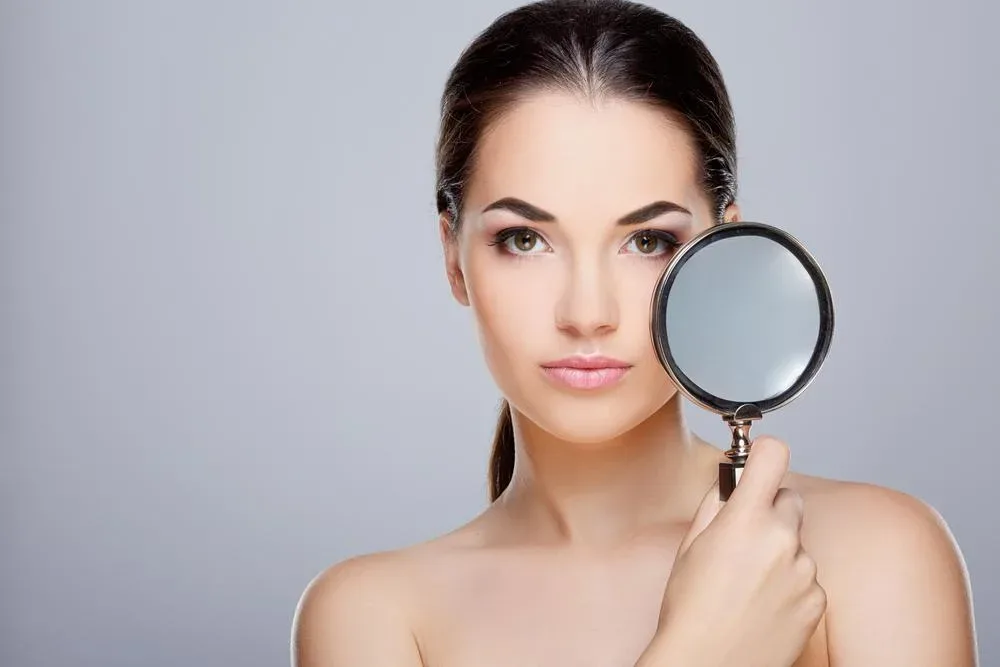How to Make Pores Appear Smaller
How to Make Pores Appear Smaller
Get up close to a magnifying mirror and there they are: your pores. Your body has millions of them, though they are more noticeable on areas where your skin is oilier, including your forehead, nose and chin. And many wonder: How to make pores appear smaller? We all have millions of pores, but they only become an issue when they start to become noticeable to the naked eye, like the dots on an orange peel. Research shows that texture and pore appearance start to worsen in a woman’s 20s, but luckily there are several things you can do to reduce the visibility of pores.
Pores are the openings to your hair follicles, and each one contains a sebaceous gland that produces oil that helps keep your skin looking healthy and hydrated. Pore size can vary depending on your age and genes.
This means that if your parents had large pores, you are more likely to have them too. Larger pores are more common in people with medium or darker skin tones. Those with oily or blemish-prone skin may have pores that also appear larger since trapped sebum and dead skin cells can cause clogged pores and stretch them out.
The loss or deterioration of collagen, the support structure of the skin, can also cause pores to get bigger over time. The ageing process, combined with sun damage, can weaken the skin’s natural collagen. So, as collagen deteriorates, your pores may begin to look bigger.
Another factor in pore enlargement is damage from the sun’s UV rays. Combined with free radicals, UV rays weaken collagen and elastin, the two supporting structures of our skin. This leads to drooping or sagging skin, resulting in larger looking pores. Daily sunblock is a must and is especially important for helping you reduce pore size.
It’s also important to moisturize. At night, apply a lightweight moisturizer after cleansing to maintain healthy, hydrated skin. If your skin tends to be on the oily side, use an oil-free, noncomedogenic (meaning it won’t clog pores) formula.
Unfortunately you can’t change your pore size, but when it comes to the question of __how to minimise pores,__ or at least their appearance, good skincare habits can help:
WHAT ARE PORES AND WHAT CAUSES THEM TO BE LARGE?
Pores are the openings to your hair follicles, and each one contains a sebaceous gland that produces oil that helps keep your skin looking healthy and hydrated. Pore size can vary depending on your age and genes.
This means that if your parents had large pores, you are more likely to have them too. Larger pores are more common in people with medium or darker skin tones. Those with oily or blemish-prone skin may have pores that also appear larger since trapped sebum and dead skin cells can cause clogged pores and stretch them out.
The loss or deterioration of collagen, the support structure of the skin, can also cause pores to get bigger over time. The ageing process, combined with sun damage, can weaken the skin’s natural collagen. So, as collagen deteriorates, your pores may begin to look bigger.
Another factor in pore enlargement is damage from the sun’s UV rays. Combined with free radicals, UV rays weaken collagen and elastin, the two supporting structures of our skin. This leads to drooping or sagging skin, resulting in larger looking pores. Daily sunblock is a must and is especially important for helping you reduce pore size.
It’s also important to moisturize. At night, apply a lightweight moisturizer after cleansing to maintain healthy, hydrated skin. If your skin tends to be on the oily side, use an oil-free, noncomedogenic (meaning it won’t clog pores) formula.
HOW TO MAKE YOUR PORES LOOK SMALLER
Unfortunately you can’t change your pore size, but when it comes to the question of __how to minimise pores,__ or at least their appearance, good skincare habits can help:
- Cleanse. Using a cleansing brush can help remove makeup, grime and excess oil from your skin.
- Exfoliate. Regular exfoliating with a scrub or cleanser containing salicylic acid will also help slough away dead skin cells, preventing them from settling into pores. Look for one that is gentle enough for everyday use and contains a hydrating ingredient such as glycerine.
- Protect. In the morning, use a moisturiser with an SPF of at least 15 to help prevent sun damage. It should also have high concentrations of Niacinamide, known to effectively reduce the appearance of pore size.
- Moisturise. At night, apply a lightweight moisturiser after cleansing to maintain healthy, hydrated skin. If your skin tends to be on the oily side, use an oil-free, non-comedogenic formula.
- Get the Glow: A CC cream helps diffuse and reflect light as it hits your skin, making your complexion look beautifully smooth.
